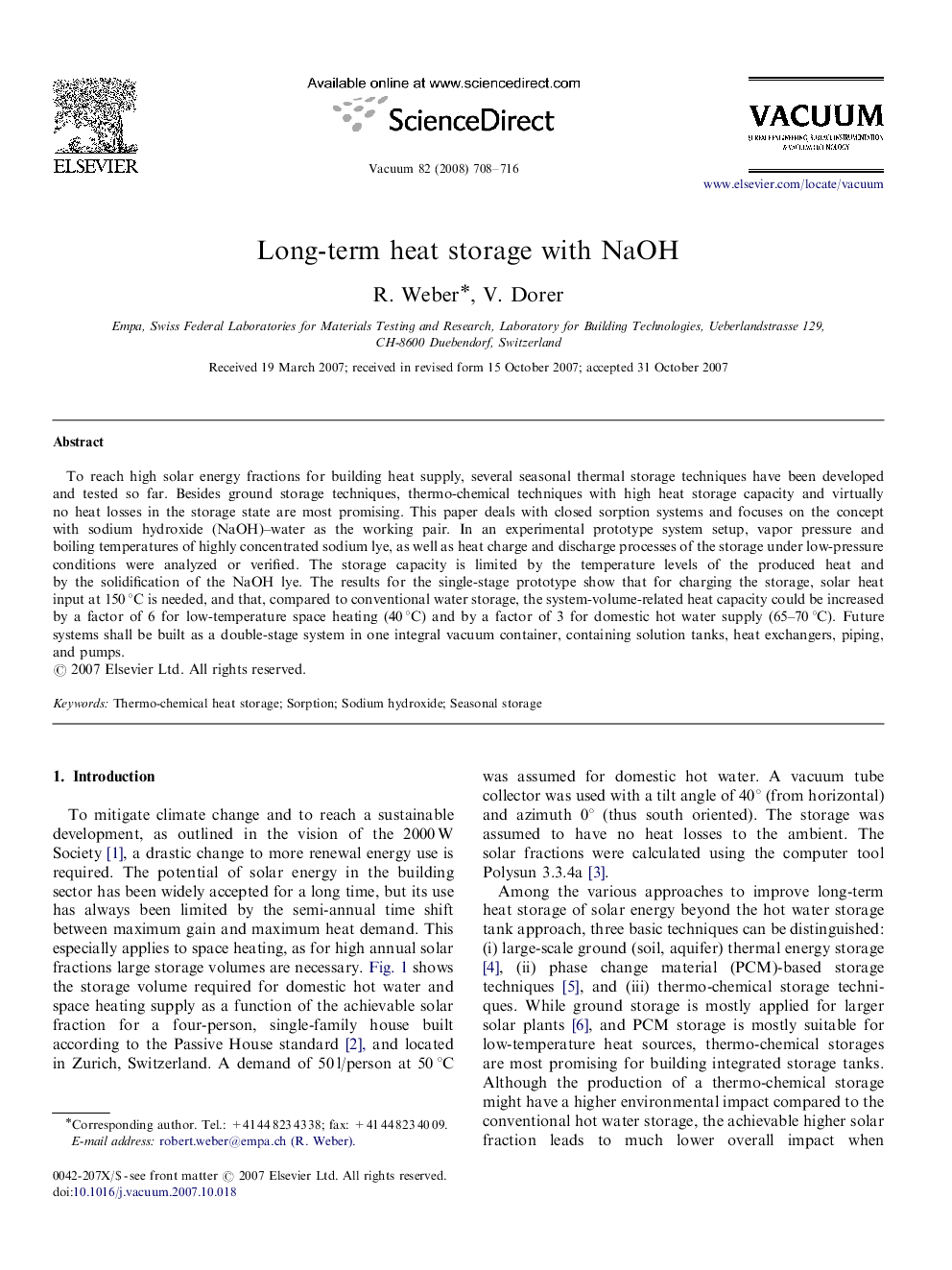| Article ID | Journal | Published Year | Pages | File Type |
|---|---|---|---|---|
| 1691358 | Vacuum | 2008 | 9 Pages |
To reach high solar energy fractions for building heat supply, several seasonal thermal storage techniques have been developed and tested so far. Besides ground storage techniques, thermo-chemical techniques with high heat storage capacity and virtually no heat losses in the storage state are most promising. This paper deals with closed sorption systems and focuses on the concept with sodium hydroxide (NaOH)–water as the working pair. In an experimental prototype system setup, vapor pressure and boiling temperatures of highly concentrated sodium lye, as well as heat charge and discharge processes of the storage under low-pressure conditions were analyzed or verified. The storage capacity is limited by the temperature levels of the produced heat and by the solidification of the NaOH lye. The results for the single-stage prototype show that for charging the storage, solar heat input at 150 °C is needed, and that, compared to conventional water storage, the system-volume-related heat capacity could be increased by a factor of 6 for low-temperature space heating (40 °C) and by a factor of 3 for domestic hot water supply (65–70 °C). Future systems shall be built as a double-stage system in one integral vacuum container, containing solution tanks, heat exchangers, piping, and pumps.
